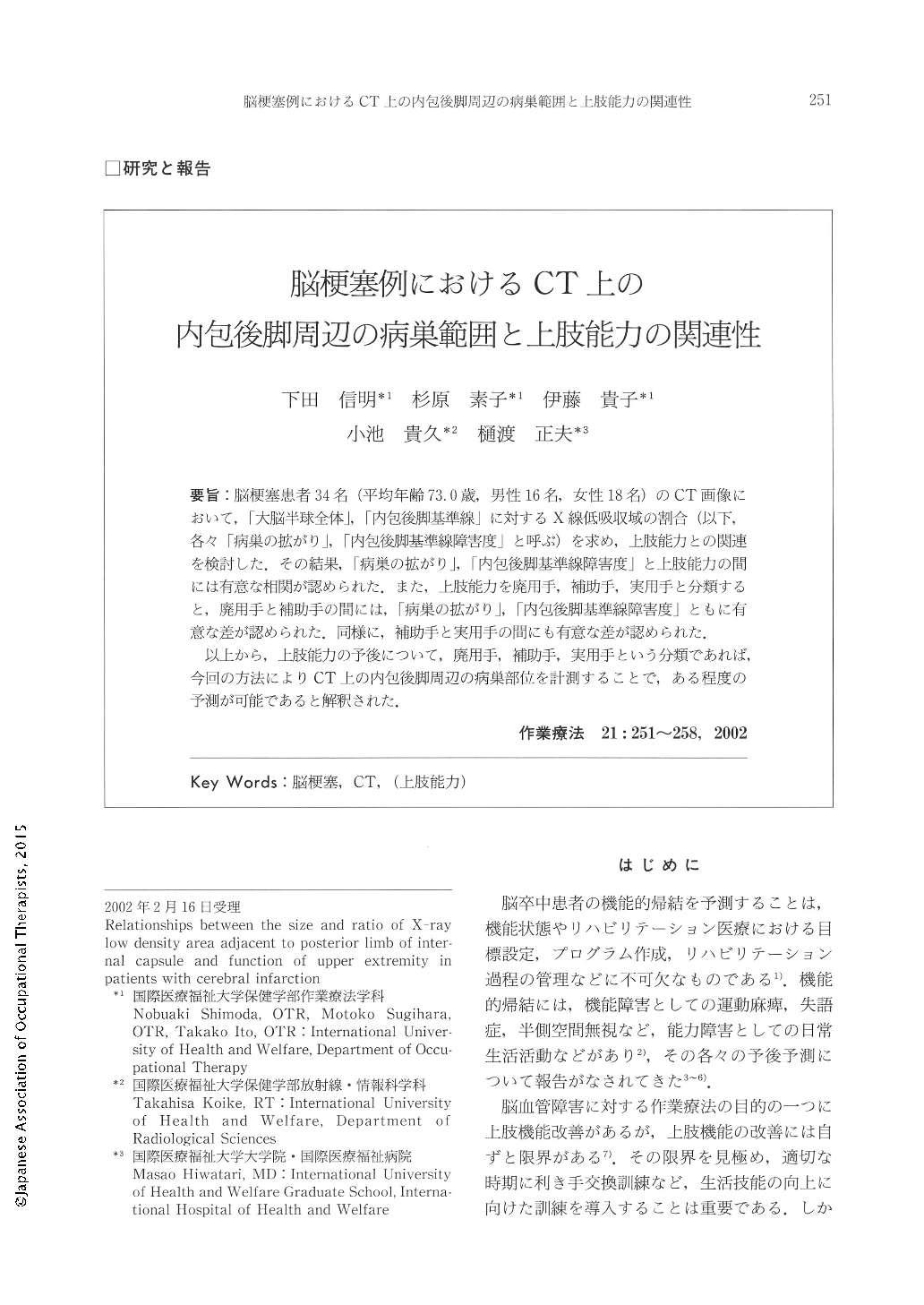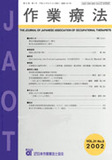Japanese
English
- 販売していません
- Abstract 文献概要
- 1ページ目 Look Inside
- 参考文献 Reference
要旨:脳梗塞患者34名(平均年齢73.0歳,男性16名,女性18名)のCT画像において,「大脳半球全体」,「内包後脚基準線」に対するX線低吸収域の割合(以下,各々「病巣の拡がり」,「内包後脚基準線障害度」と呼ぶ)を求め,上肢能力との関連を検討した.その結果,「病巣の拡がり」,「内包後脚基準線障害度」と上肢能力の間には有意な相関が認められた.また,上肢能力を廃用手,補助手,実用手と分類すると,廃用手と補助手の間には,「病巣の拡がり」,「内包後脚基準線障害度」ともに有意な差が認められた.同様に,補助手と実用手の間にも有意な差が認められた.
以上から,上肢能力の予後について,廃用手,補助手,実用手という分類であれば,今回の方法によりCT上の内包後脚周辺の病巣部位を計測することで,ある程度の予測が可能であると解釈された.
In this study, and via computed tomography (CT), we calculated the percentage of X-ray low-density (damaged) areas adjacent to the posterior limb of the internal capsule against the total area of the cerebral hemisphere. We were then able to find relationships between these calculations and upper-extremity, residual functions in 34 hemi-paralytic patients with cerebral infarction (18 females and 16 malesrmean age of 73.0 years). When the residual function of the upper extremity was graded into 6 levels, we found that these levels correlated, significantly, with both the size of the damaged area and the ratio of the damaged area to the total cerebral hemisphere. When patients were divided into 3 groups, according to levels of residual function (i.e., nonfunctional hand, assistive hand, functional hand), values of the assistive hand group differed, significantly, with regard to the size and ratio of the damaged areas on the cerebral CT, from both the nonfunctional hand group and the functional hand group.
These results suggest that calculations of the size and ratio of the damaged area on the cerebral CT may be helpful in estimating the functional prognosis of upper extremities in patients with cerebral infarction.

Copyright © 2002, Japanese Association of Occupational Therapists. All rights reserved.


